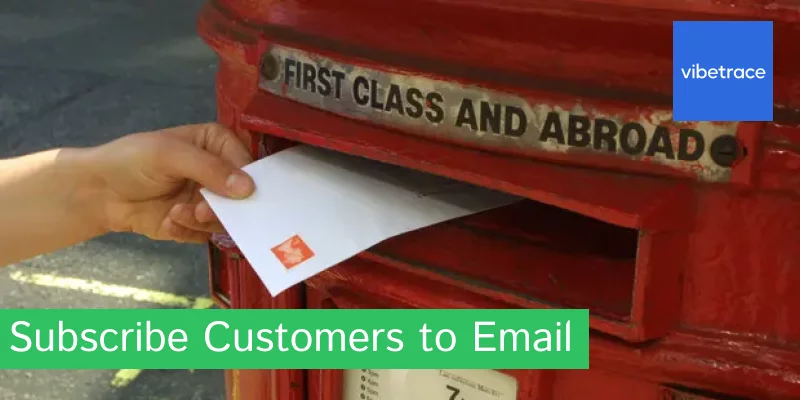Introduction
Newsletters are a powerhouse tool in ecommerce for a simple reason: they keep your brand top-of-mind.
By landing directly in a customer’s inbox, you have a direct line to engage them with personalized offers, product updates, and valuable content.
Automatic subscription in ecommerce is the practice of automatically enrolling customers into your newsletter list, usually during the checkout process or account creation.
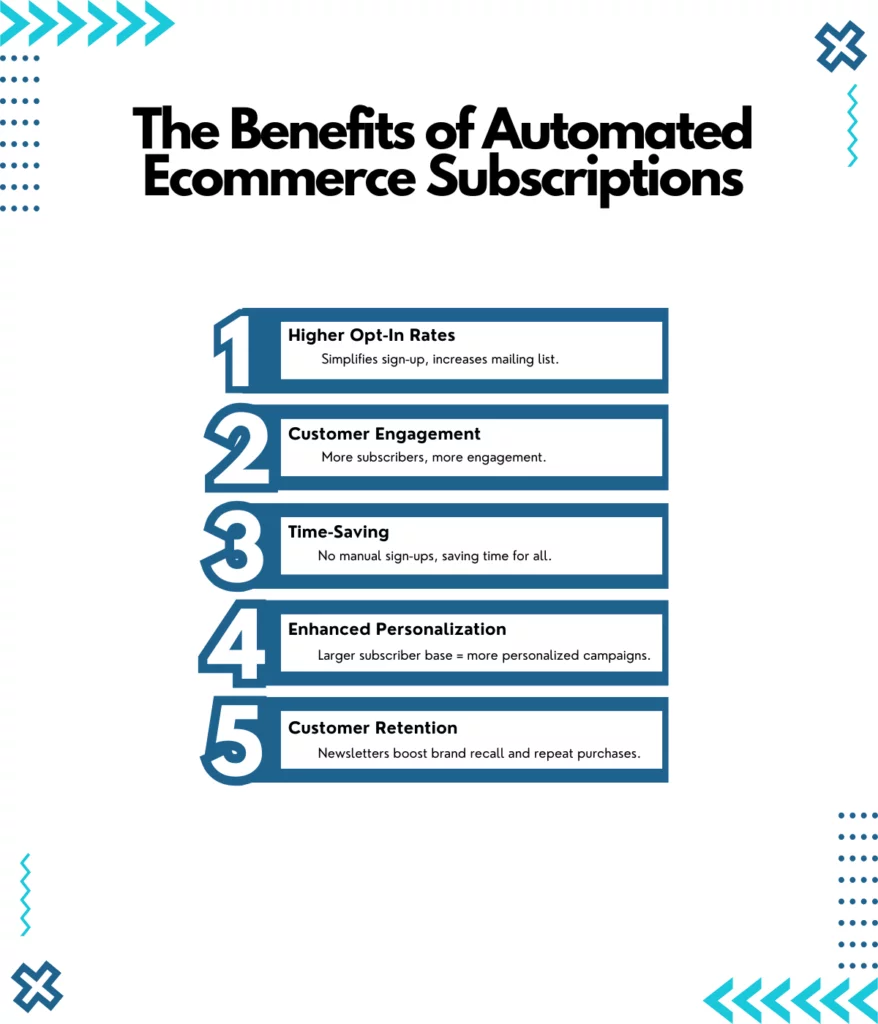
This streamlined approach has several benefits:
- Higher Opt-In Rates: It simplifies the subscription process, leading to more people on your mailing list.
- Customer Engagement: With more subscribers, you have more opportunities to engage customers through targeted content and offers.
- Time-Saving: It eliminates the need for manual sign-ups, saving time for both you and your customers.
- Enhanced Personalization: With more data from a larger subscriber base, you can create more personalized marketing campaigns.
- Customer Retention: Regular newsletters keep your brand fresh in customers’ minds, encouraging repeat purchases.
Automatic subscription isn’t all sunshine and rainbows; it has its drawbacks too.
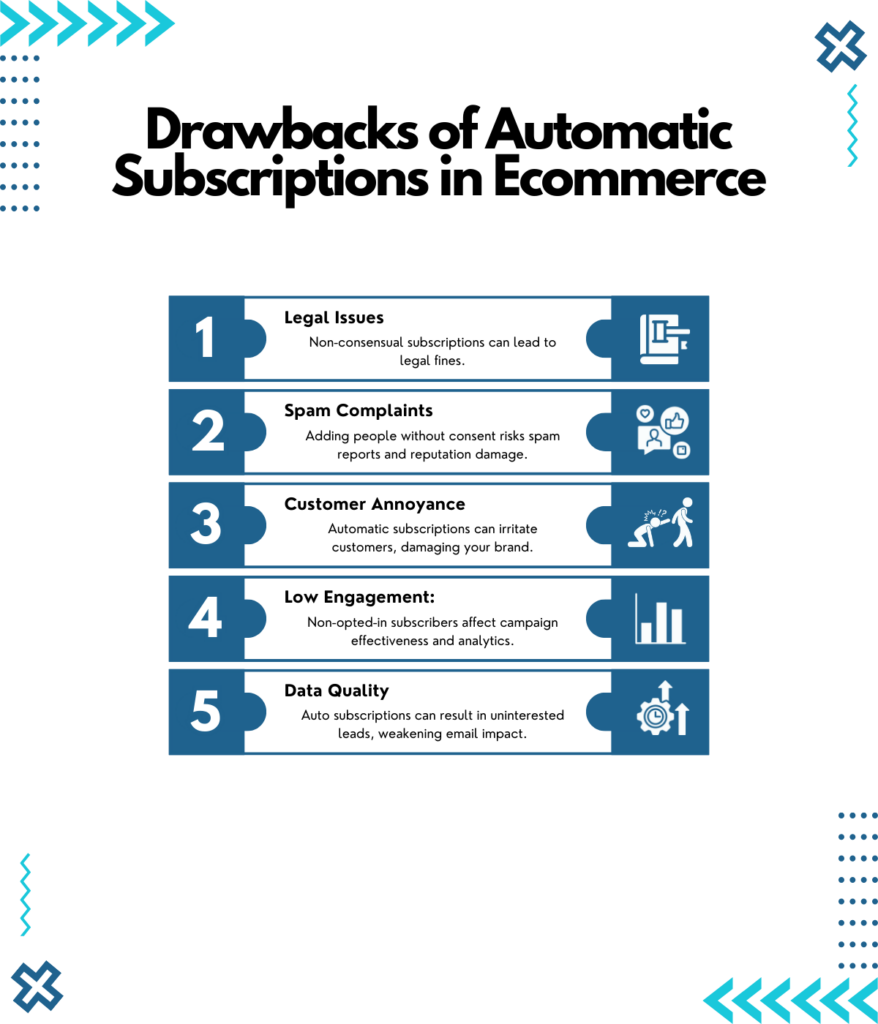
Here are some of the big ones:
- Legal Issues: Without proper consent, you could run afoul of regulations like GDPR or the CAN-SPAM Act, leading to hefty fines.
- Spam Complaints: If people are added without their explicit consent, they’re more likely to mark your emails as spam, hurting your sender reputation.
- Customer Annoyance: Nobody likes unsolicited emails. Automatic subscription can irritate customers, potentially damaging your brand image.
- Low Engagement: Subscribers who didn’t intentionally opt-in are less likely to engage with your content, which can skew your analytics and reduce the effectiveness of your campaigns.
- Data Quality: Automatic subscriptions can lead to a list full of low-quality leads who have little interest in your brand, diluting the impact of your email marketing efforts.
So, while automatic subscription can boost your subscriber numbers, it’s crucial to weigh these drawbacks and implement the strategy responsibly.
By automating the subscription process, you’re setting the stage for a more engaged and loyal customer base. 📧👍
Legal Considerations
- GDPR and CAN-SPAM Act: Discuss the legal aspects of automatic subscriptions.
- Opt-In vs. Opt-Out: Explain the difference and what’s more compliant.
How to Implement Automatic Subscription
Platform Specific: subscribe when doing the purchase
Let’s see how you can auto subscribe customers to your newsletter lists for main ecommerce platforms: Prestashop, Shopify, Magento and similar
Solution 1: use a tool like Vibetrace that gives you the option to automatically subscribe customers to your newsletter list.
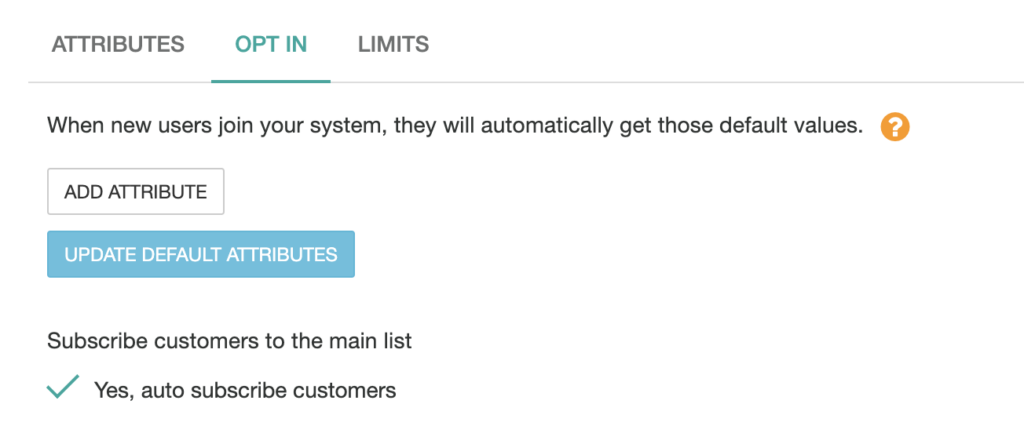
Solution 2: use a marketing automation solution (like Vibetrace, Klaviyo) and create a workflow (automation) to get customers to subscribe automatically
Solution 3: manual. You can run a process to export customers within a specific time period and import them as subscribers. While this takes time and it’s manual, it might be a good idea to start with. And most of the times it’s free of charge.
Other related email subscription ideas.
If you don’t want to automatically subscribe customers, but you feel there is a big opportunity to get their email addresses, here are some locations where opt-in rate is really high:
- Subscribe on Checkout page
- Subscribe on Thank You Page
Want to be up to date with Marketing?
Subscribe to our Retail CX newsletter!

Stay connected with what’s really important to optimize your digital revenues.
By clicking the button, you accept our Terms & Conditions. Also you will need to confirm your email address.
Best Practices
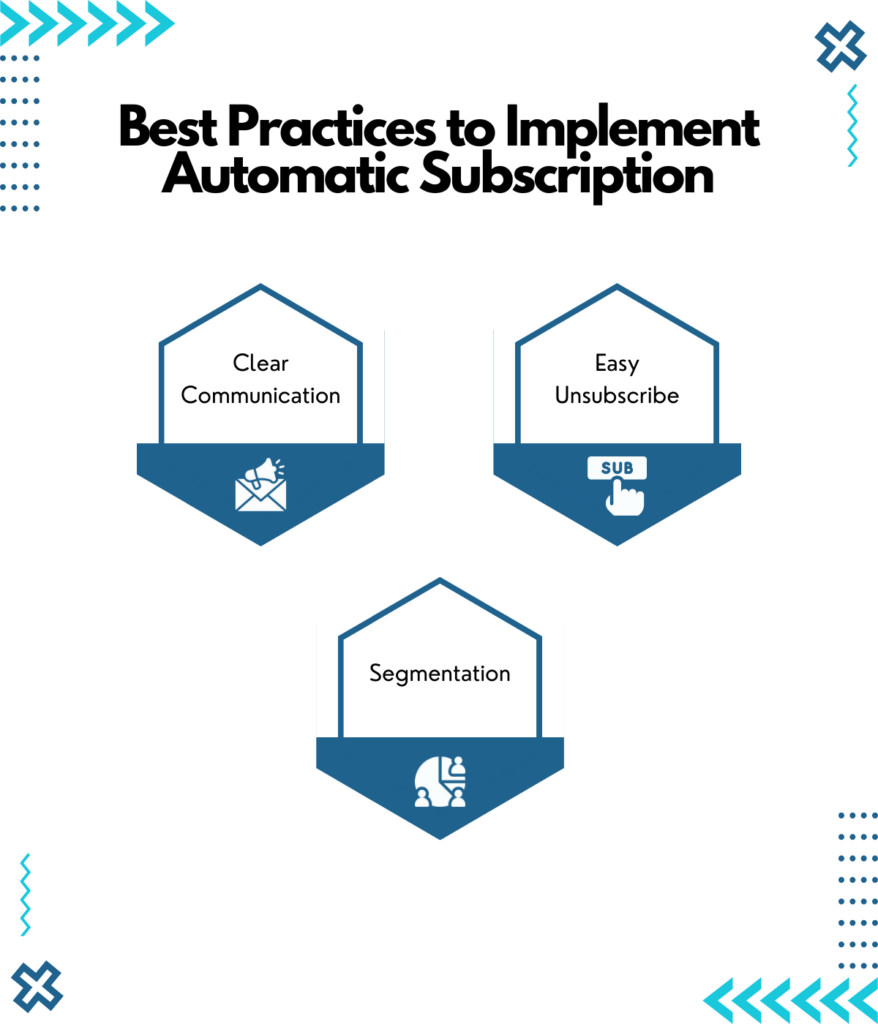
- Clear Communication: Stress the importance of letting customers know they’ll be subscribed.
- Easy Unsubscribe: Guide on making the unsubscribe process straightforward.
- Segmentation: Tips on how to segment automatically subscribed customers for targeted content.
Risks and How to Mitigate Them
Now you have automated subscription in place. Here’s how to approach the biggest drawbacks:
- Spam Complaints: How to avoid being marked as spam.
- Customer Annoyance: Tips to ensure you’re providing value and not annoying customers.
Reduce spam complaints and limit customer annoyance:
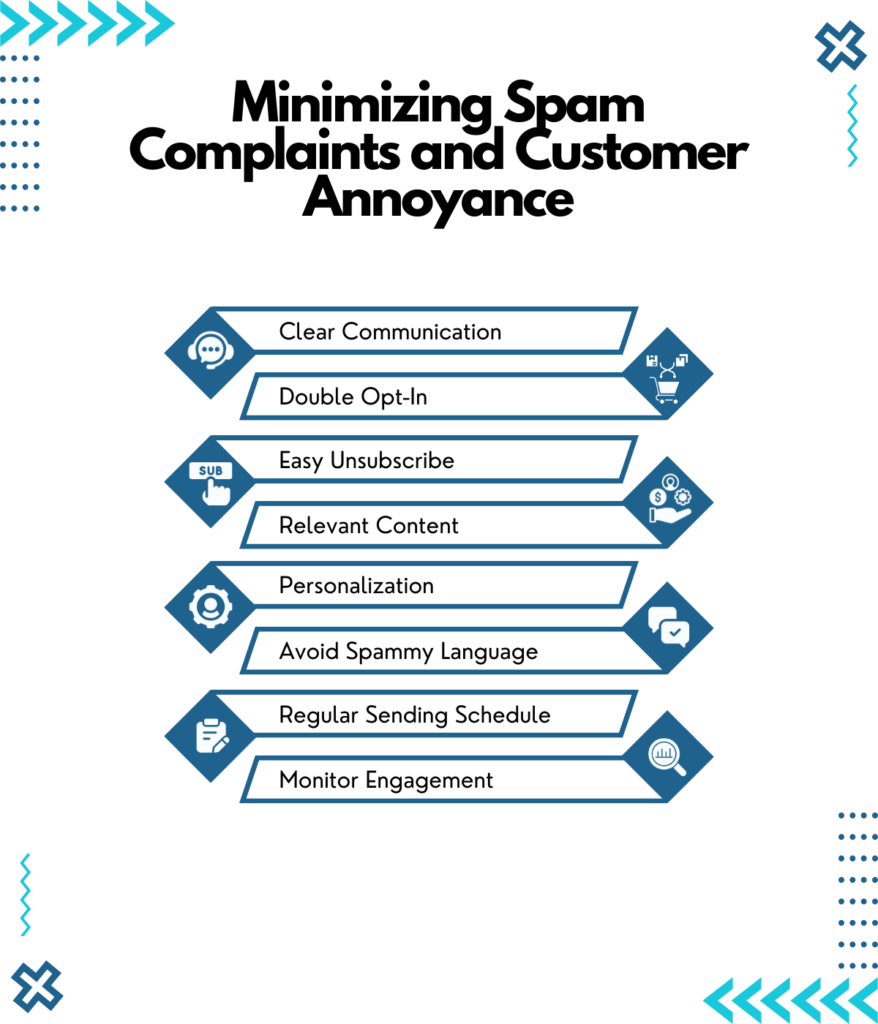
- Clear Disclosure: Make sure customers know they’ll be subscribed during the checkout or sign-up process. Transparency is key.
- Double Opt-In: Send a confirmation email asking new subscribers to verify their email address. This ensures they genuinely want to receive your newsletters.
- Easy Unsubscribe: Include a simple, one-click unsubscribe link in every email. The harder it is to opt-out, the more likely you’ll be marked as spam.
- Relevant Content: Make sure your newsletters offer value. Irrelevant or overly promotional content is a fast track to the spam folder.
- Personalization: Use the customer’s name and offer personalized recommendations. This not only adds value but also shows that the email is not mass-produced spam.
- Avoid Spammy Language: Words like “free,” “guarantee,” and “no obligation” can trigger spam filters. Be mindful of your wording.
- Regular Sending Schedule: Consistency helps ISPs recognize you as a legitimate sender. Sporadic blasts can raise red flags.
- Monitor Engagement: Keep an eye on open and click-through rates. Low engagement can indicate that your emails are not well-received and may be marked as spam.
Conclusion of Automatically Subscribing Customers to Newsletter
While the benefits of automatic subscription are clearly visible, you might always need to think twice if it’s worth for your business.
At @vibetrace we encourage our customers to implement this strategy but to consider all the aspects from this article. Legal compliance, customer annoyance and spam complaints.
If you have a big bounce rate or spam rate from those subscribers, consider stop doing it.

